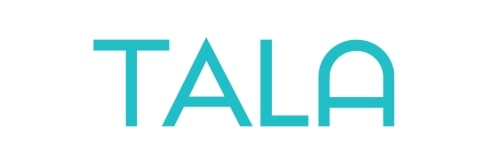
About Tala
Tala is reinventing financial infrastructure by offering what legacy institutions don’t. The company empowers the financially underserved in emerging markets and drives global economic progress. Through Tala’s money app, customers in the Philippines, Mexico, Kenya and India can bypass the barriers imposed by legacy institutions to access credit, payments, savings and transfer services.
Since launching in 2014, Tala has achieved remarkable success, now with a customer base of 8.5 million, securing its position as the largest financial platform for the Global Majority. Tala’s customers access over $3 million of loans daily, while Tala’s platforms process almost $200 million in monthly transactions. Tala’s decision to deploy Solvexia aligns with their commitment to harnessing the best next-generation technologies to build trusted solutions for their customers.
The Challenge
The reconciliation process was being completed manually, ‘on-demand’. Seeking a more proactive approach, Tala wanted a system that would enable the timely reconciliation of transactions each day, with any variances promptly escalated for investigation.
In addition, inconsistent procedures were in place across different markets. For some markets, transactions were manually matched in Excel. For others, a simplistic month-end balance comparison was performed between Tala’s system and the statement balances from Payment Rails. The team sought a consistent method to identify data discrepancies across all markets, eliminating the need to bring large datasets into Excel - a tedious and time-consuming process.
For markets utilizing manual transaction matching, the process could take up to 2 hours for each Rail, oftentimes longer if Excel crashed. The team would encounter obstacles during the reconciliation process when they attempted to identify specific transactions responsible for discrepancies using only ending balance comparisons. Consequently, the team aimed to streamline reconciliation processes, enhance visibility and investigation capabilities, and ensure consistency across the business.
Solution
Tala implemented Solvexia to automate the reconciliation of daily cash movements between Tala and nine Payment Rail partners. Solvexia facilitates the daily automated reconciliation of thousands of transactions, accommodating different mapping rules and input data specific to each Rail.
The automated solution validates and prepares the input data from various Payment Rail data formats. While some Rails provide a single file with daily transactions, others may offer up to three files with varying levels of granularity (daily, monthly, and yearly transactions), all of which are prepared, transformed and matched in the daily reconciliation. The automated solution uses a combination of one-to-one and one-to-many mapping rules.
“I like the fact that Solvexia is pretty much customizable and doesn’t have a standard platform where you have to plug in your numbers and adjust to that. It rather adjusts to our needs.”
– Lloyd Kaara, Senior Analyst, Global Reconciliation
In scenarios where it's necessary to rerun processes for previously reconciled transaction dates, obtaining approval is required to modify historical reconciliation results. Before generating the final reconciliation report, users receive an initial report, enabling them to review, address, and document any discrepancies identified. The process remains flexible and adaptable to changes from both the Payment Rails perspective, such as alterations in file formats, and from the business perspective, such as accommodating different views and reports.
Tala chose Solvexia due to its high level of customization, as each Rail partner operates slightly differently. The successful proof of concept using real data was crucial in securing internal support for the solution.
Key Results and Outcomes
Since implementing Solvexia, the time required to run each reconciliation has significantly decreased from 2 hours to 10-15 minutes. This reduction in workload not only allows for more time to be allocated to other tasks but also enables prompt investigation into discrepancies. The approach to handling discrepancies has shifted towards a proactive strategy, leading to heightened visibility and the capacity to communicate discrepancies to relevant parties. The reconciliation process has been standardized across the business, and there is now a unified process for identifying discrepancies.
“It’s been smooth working with Solvexia, almost like working with an internal team here at Tala.”
– Ayush Dhurka, Product Manager
The enhanced ability to investigate discrepancies in a timely manner has facilitated sharing such insights with the broader team, including the customer service team and engineers. This information proves valuable, for example, in identifying app issues and alleviating pain from customer tickets and system downtime to develop solutions for longstanding problems. According to the Director of Global Accounting, Bernadette Dalton, this “is the best proof of the value of the tool: not just to Accounting/Data teams at Tala, but to the organization as a whole.”
Key Metrics
- Reconciliation runs in 10-15 minutes
- 9 cash-in and cash-out Payment Rails
- Reconciliations performed up to 12x faster
.svg)

